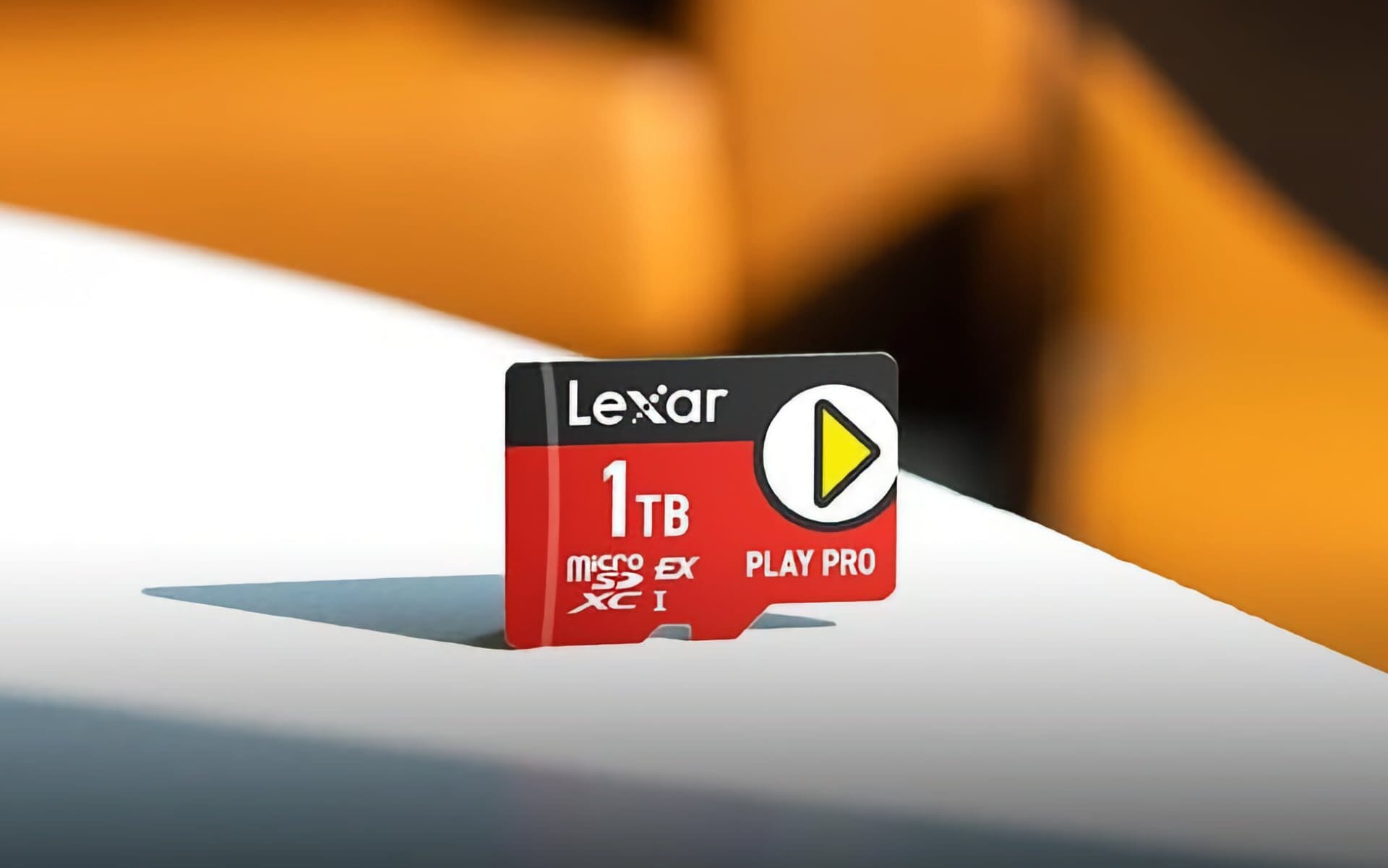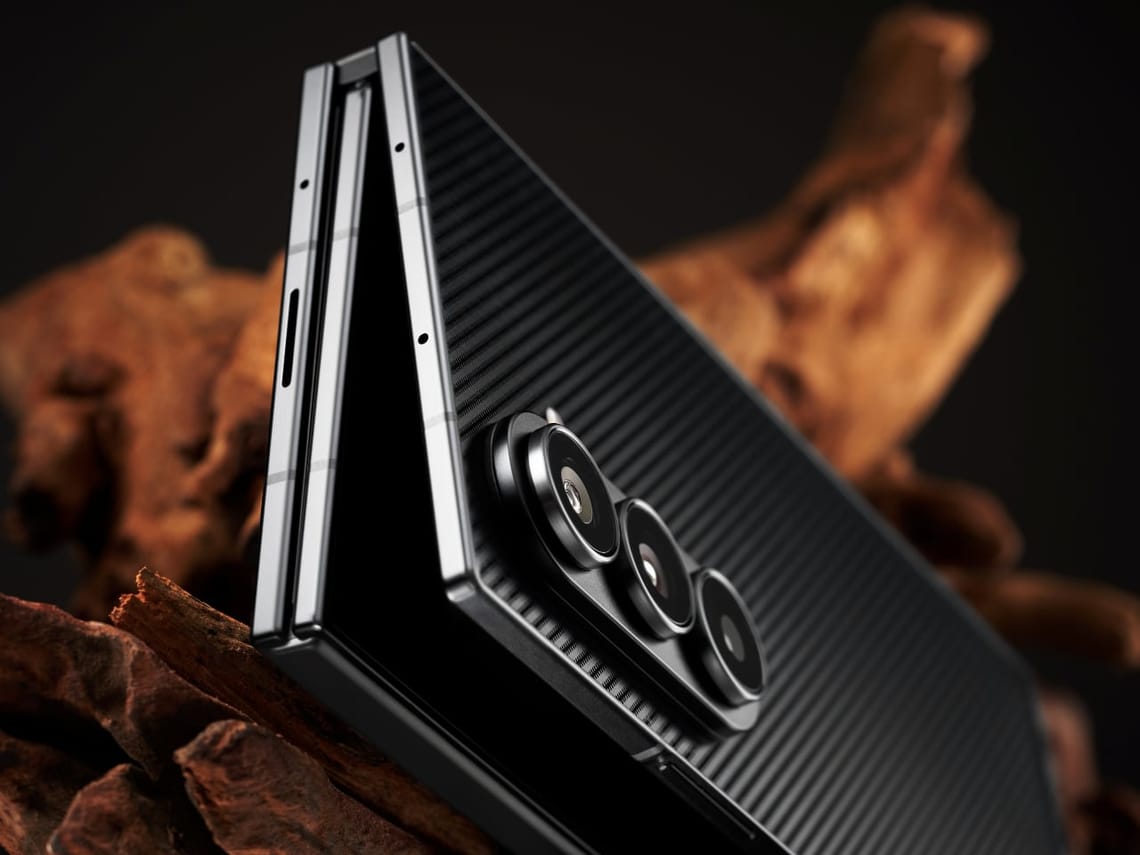Nintendo’s latest console, the Switch 2, has ushered in a new era of expandable storage by adopting microSD Express – a cutting-edge memory card standard that delivers vastly higher speeds than the microSD cards we’ve used for years.
MicroSD Express isn’t just a minor upgrade; it’s a fundamentally different technology that combines the compact convenience of microSD with the blazing performance of an SSD. Introduced by the SD Association in 2019, this little-used standard languished on the sidelines until Nintendo made it the mandatory storage medium for Switch 2 games.
In this article, we explain how microSD Express differs from the older cards, its specs and speeds, compatibility considerations, the cards and manufacturers available today, current (and future) pricing and capacities, and what the future might hold for this promising technology.
How Is MicroSD Express Different from Older MicroSD Cards?
At first glance, a microSD Express card looks almost like any other microSD – but don’t be fooled. The differences run deep in both design and capability. Here are the key ways microSD Express stands apart from previous-generation microSD cards:
- PCIe/NVMe Interface: MicroSD Express cards incorporate a PCI Express interface and NVMe protocol, effectively transforming the card into a compact SSD. By contrast, older microSD (SDHC/SDXC) cards use the legacy SD bus (UART/parallel interface). This new interface gives Express cards full-duplex, high-bandwidth communication, unlike the half-duplex legacy mode.
- Dramatically Higher Speeds: Thanks to PCIe, microSD Express can reach theoretical transfer rates up to ~985 MB/s with a PCIe 3.0 lane – nearly 10× faster than the ~100 MB/s limit of UHS-I cards . In fact, the SD Association quotes a ceiling of up to 3,940 MB/s when using two PCIe lanes at PCIe 4.0 (although dual-lane is intended for full-size SD cards). This is a huge leap from older UHS standards (UHS-I tops at 104 MB/s, UHS-II at 312 MB/s). In real-world products today, microSD Express cards boast read speeds of around 800–900 MB/s – more on that later.
- “EX” Marking: To avoid mix-ups, microSD Express cards carry an “EX” logo on both the card and its packaging. This small emblem is the quickest way to tell an Express card apart from a standard microSD. For example, Nintendo’s official Switch 2 memory cards feature the EX symbol prominently on the front (often alongside Nintendo branding). If a card doesn’t have “EX,” it’s not a microSD Express card.
- Second Row of Pins: Like UHS-II cards, microSD Express uses an extra set of contact pins. However, in Express cards, those pins carry PCIe signals instead of the UHS-II interface. This means physically the cards are similar, but an Express card’s second-row pins speak a different “language” to the host device (PCIe rather than the old SD protocol). Older devices without those extra pins will still recognise the card – but only using the first row (more on compatibility below).
- NVMe SSD Architecture: Because they use the NVMe protocol, microSD Express cards handle data more like an SSD than a typical SD card. This can improve not only sequential throughput but also random read/write performance and latency. In practical terms, it helps narrow the performance gap between external storage and internal storage. While an Express card still won’t quite match a console’s built-in drive speeds, it will decrease load times to a level that older cards never could.
[lasso id="5900" link_id="1140562" ref="amzn-nintendo-samsung-mircosd-express-card-256-gb"]
A Samsung 256 GB microSD Express card (licensed for Nintendo Switch 2). Note the “EX” emblem on the card, which distinguishes it from standard microSD cards. Switch 2 uses this new card type to achieve much faster game loading and saving.
In short, microSD Express is a game-changer in the microSD world. It transforms what used to be a bottleneck (slow SD card storage) into something far closer to an internal flash drive. Nintendo’s decision to use this new standard in the Switch 2 is one of the first mainstream uses of microSD Express, and it’s the reason gamers now need to pay attention to those tiny “EX” labels.
Blazing Speeds: Specs and Performance of MicroSD Express
Current microSD Express cards on the market deliver real-world speeds that, while slightly below the theoretical max, are still vastly superior to their predecessors. For example, Lexar’s PLAY PRO microSD Express (one of the first on the market) offers up to 900 MB/s read and 600 MB/s write speeds . SanDisk’s official Switch 2 microSD Express is rated around 880 MB/s read and 480 MB/s write, with a sustained write of ~100 MB/s – far above what any UHS-I microSD could maintain.
It’s worth noting that microSD Express has its own new speed rating classes, dubbed “E” Speed Classes. These include E150, E300, E450, and E600 – numbers that represent minimum sustained write speeds of 150 MB/s, 300 MB/s, 450 MB/s, and 600 MB/s respectively .
These are analogous to the older “V” video speed classes (such as V30, V60, V90), but targeting the significantly higher performance of PCIe-based cards. In practice, many first-gen Express cards do not yet hit the E150 threshold for sustained write (for instance, a 100 MB/s sustained write is below E150). Manufacturers often still quote U3 (30 MB/s) or V30 ratings for these cards, as they easily meet those lower standards but may not guarantee sustained speeds of 150 MB/s or higher in all scenarios. As the technology matures (and possibly with higher-capacity models that feature more parallel flash memory), we may start seeing E-class ratings on consumer cards when they can consistently sustain those blazing speeds.
One important thing to understand is that peak sequential speed isn’t the only improvement. Because microSD Express cards leverage NVMe, they can handle multiple I/O operations concurrently and improve random access times. This means that installing and playing the latest games on Switch 2 or loading many small files from an Express card will feel snappier compared to a traditional microSD. In the context of the Switch 2, that translates to smoother asset streaming and faster level load times when running games off an external card. It doesn’t make an external card equal to the console’s internal storage – but it comes closer than ever before, reducing the performance penalty that external game storage used to incur.
Looking ahead, the microSD Express standard has a road map for even higher speeds. The SD Association’s spec 8.0 added support for PCIe 4.0, which doubles bandwidth per lane. A future microSD Express card using PCIe 4.0 x1 could
theoretically reach roughly 2 GB/s (around 1,969 MB/s). Full-size SD Express cards can utilise two PCIe lanes (x2) to achieve nearly 4 GB/s, although it’s unclear if a dual-lane configuration could ever be implemented on the compact microSD form factor.
As of mid-2025, all commercially available microSD Express cards are still based on PCIe 3.x (Gen3, single-lane). None have yet implemented PCIe 4.0 or dual-lane, so the ~1 GB/s ceiling remains for now. But in the coming years, we can expect next-gen microSD Express cards that push the speed limits even further – provided devices emerge to support those speeds.
Backwards Compatibility: New vs Old
With any new standard, a big question is: Will my old cards or devices still work? The answer for microSD Express is a mix of yes and no, depending on which direction you’re looking:
Using old microSD cards in the Switch 2
Unfortunately, if you have a stash of standard microSD cards (the kind used in the original Switch, Switch Lite, etc.), you cannot use them to store games on a Switch 2. Nintendo
has made it clear that the Switch 2 is only compatible with microSD Express cards for game storage.
Inserting a non-Express microSD will result in the console refusing to use it for saves or downloads. (The Switch 2 can read your old card only to transfer media like screenshots/videos, but it won’t run games off it .) This decision effectively “drops” backwards compatibility on the console side – a bold move that prioritises performance at the cost of forcing an upgrade on consumers.
The rationale is understandable: older cards are simply too slow to keep up with modern game data demands, and Nintendo didn’t want slow storage causing poor gameplay experiences. By requiring the faster standard, they ensure that any expandable storage meets a baseline performance for smooth gaming.
The downside, of course, is that Switch 2 owners must budget for a new Express card if they need more space beyond the console’s built-in 256 GB. Your trusty 256 GB microSDXC card from your Switch won’t help here, except as a means to copy over media or temporarily shuttle files.
Using new microSD Express cards in older devices
MicroSD Express cards are designed to be backwards-compatible with older hosts, albeit in a limited way. Specifically, an Express card will work in devices that support standard microSD – it will simply fall back to UHS-I speeds (or High Speed mode if the host is very old). The card is required by the specification to support legacy SD modes on its first row of pins. So, if you plug a microSD Express into, say, an original Switch (which only has a UHS-I interface), it will be recognised and function, but the data rates will be equivalent to those of a normal microSD card.
In fact, Nintendo notes that you can use a microSD Express in a Switch 1 console, but you’d get no speed benefit – it would behave like a regular UHS-I card. Similarly, cameras or phones that only support older SD interfaces can still use these new cards, just without the speed boost. One catch: because the Express card repurposes the second-row pins for PCIe, it cannot leverage UHS-II or UHS-III speeds in those older devices. If a camera has a UHS-II microSD slot, an ExpressCard in it will drop to UHS-I mode (since the card isn’t speaking UHS-II on that second row). So backwards support tops out at UHS-I compatibility across the board.
In summary, microSD Express cards work in older hardware (with reduced performance), but older microSD cards do not work in Switch 2 for gaming purposes. This one-way compatibility situation has been a point of discussion – it’s somewhat unusual, as new SD standards are typically aimed at full backwards compatibility. The SD Association originally touted SD Express as being backwards-compatible (the cards could fall back to legacy mode). However, by choosing not to support legacy cards in the new console, Nintendo effectively “dumped” that advantage from the user's perspective. The bet is that the performance benefits outweigh the inconvenience, and over time, as prices come down, gamers will appreciate the faster storage more than they miss using old cards.
One practical note:
The first time you insert a microSD Express card into a Switch 2, the console requires a system update over the internet. This is likely to ensure the latest firmware support and stability for the new storage. So don’t be surprised if you have to download an update before you can use your shiny new card. After that, it should be smooth sailing – games and save data can be stored on the card and will load at the higher speeds that the Switch 2’s architecture is built to handle.[lasso id="5999" link_id="1141854" ref="amzn-nintendo-switch-2-micro-sd-card-sandisk"]
Who’s Making MicroSD Express Cards? (Manufacturers and Cards Available)
When a new format is launched, it often takes time for multiple manufacturers to get on board. In the case of microSD Express, the Switch 2’s debut in 2025 spurred several major memory vendors to release compatible cards in various capacities . Here are the notable players and products in the market right now:
- SanDisk (Western Digital): A familiar name in Nintendo’s storage (they made the officially licensed microSDXC cards for the original Switch), SanDisk was among the first with microSD Express. Their cards, branded “Works with Nintendo Switch 2,” come in capacities such as 128 GB and 256 GB, boasting read speeds of up to ~880 MB/s and write speeds of up to ~480 MB/swrite speeds. These typically feature Nintendo-themed packaging and the EX logo. (As of early 2025, a 128 GB SanDisk Express card costs around $50–$55.) Higher capacities (512 GB, 1 TB) from SanDisk are expected or in development, but the 128–256 GB range was their initial focus for Switch 2 owners.
- Samsung: Samsung’s memory division also jumped in, producing an official 256 GB microSD Express card in partnership with Nintendo. It carries Nintendo branding (the card is bright red with a Mario “M” logo in some marketing images) and the EX symbol. Samsung is known for its high-performance flash, so we can expect their card to deliver similar speeds of around 900 MB/s. The Samsung 256 GB card was launched around June 2025, and additional sizes (perhaps 512 GB or more) may follow as production ramps up.
- Lexar: Lexar took a lead in capacity by launching the world’s first 1 TB microSD Express card right as the Switch 2 was announced . Their PLAY PRO microSD Express series includes models with capacities of 256 GB, 512 GB, and 1 TB. These are marketed squarely at gamers, promising game load speeds “4× faster” than old cards and quoting up to 900 MB/s read / 600 MB/s write performance. Lexar’s 1 TB card grabbed headlines not just for its size but also for its price – originally with a ~$199 MSRP for 1 TB, $99 for 512 GB, and $49 for 256 GB. (Due to high demand and limited supply, street prices briefly spiked higher, but as production catches up, those should normalise.) Lexar clearly positioned itself as a top-tier option, and its 1 TB card ensures that heavy downloaders or those wanting to carry a large digital library can do so on a single card.
- PNY: Memory maker PNY introduced its own microSD Express cards in 128 GB and 256 GB capacities, which launched around mid-2025. PNY’s cards (often white-colored) advertise up to 890 MB/s read and ~550 MB/s write speeds – in the same ballpark as other brands. Notably, PNY priced these quite aggressively: around $44.99 for 128 GB and $55.99 for 256 GB at launch, undercutting some of the “official” cards. This competition helped drive prices down and offered Switch 2 owners more choices for mid-range capacities.
[lasso id="5949" link_id="1141850" ref="amzn-lexar-1tb-play-pro-microsd-express-card-uhs-i-c10-u3-v30-full-hd-4k-up-to-900-600-mb-s-memory-card-compatible-w-nintendo-switch-2-asus-rog-ally-steam-deck-gaming-lmsxps0001t-bnnnu"]
Lexar’s PLAY PRO microSD Express card, shown here in a 1 TB capacity – the first of its size . These cards utilise the new EX standard to deliver up to ~900 MB/s reads and are designed for high-performance gaming on devices like the Switch 2.
Between these players, the microSD Express ecosystem is rapidly taking shape. SanDisk, Samsung, Lexar, and PNY are among the major flash memory brands, and their offerings span a range of capacities from 128 GB to 1 TB. It’s also worth mentioning that, as of mid-2025, availability has been somewhat sporadic – early on, many cards sold out due to the sudden surge in demand from new console owners.
Samsung’s card, for instance, was initially described as a “paper launch,” with actual stock arriving a little later than the Switch 2 itself. Lexar’s high-end cards also saw backorders. However, the situation has been improving, with restocks and more brands coming online. Prospective buyers now have multiple sources to choose from when expanding their Switch 2 storage.
Over the next year or two, as flash memory prices generally decline and microSD Express controllers become more widespread, the price gap between Express and standard microSD should narrow (although it may not fully close for some time). By the time a 2 TB Express card eventually launches (perhaps in 2026 or 2027, depending on demand and technological progress), 1 TB might have become relatively affordable, and smaller sizes like 256 GB could be quite mainstream in price. Remember that when the first 1 TB normal microSD cards launched a few years ago, they cost around $450; now you can find them for under $150. A similar trajectory could unfold for microSD Express, albeit possibly at a slower pace if adoption is limited.
The Future of MicroSD Express Technology
The arrival of microSD Express in a mainstream product is an exciting development, but what comes next? Here are a few things to watch for in the future of this technology:
Wider Adoption in Devices
The Switch 2 is the first high-profile use of microSD Express, but it will not be the last. With the precedent set for using NVMe-based removable storage in consumer devices, other gadget makers will follow suit. We might see future handheld gaming devices (from other brands) adopt microSD Express if they need fast expandable storage.
There’s speculation that camera manufacturers, who so far ignored SD Express in favour of other formats, might give microSD Express a second look for action cams or drones – especially if they require small cards that can write 8K video at high bitrates. However, it’s a tough sell in cameras, since many have already moved to CFexpress or stick with UHS-II SD cards.
Phones are less likely to jump on board, as many flagship smartphones have phased out microSD slots entirely, and those that remain often aren’t focused on bleeding-edge external storage speeds. Still, niche applications could emerge. The fact that microSD Express is essentially a tiny NVMe drive could inspire creative uses in IoT or computing devices that need removable yet fast storage.
Next-Gen Speed Upgrades
The current cards
utilise PCIe 3.1 and already approach ~1 GB/s, and the next step is to support PCIe 4.0 in microSD Express (as per SD spec 8.0), effectively doubling the potential throughput. It’s likely that we’ll see a microSD Express v2.0 (so to speak) in a few years that advertises speeds of up to ~2 GB/s.
Of course, to benefit from that, new host devices must also implement PCIe 4.0 in their microSD controllers. It’s unclear if the Switch 2’s slot is strictly Gen3 or could be firmware-upgraded or hardware-ready for Gen4; most likely, it’s a Gen3 design, meaning a hypothetical Switch 3 or Switch 2 Pro in the future might be needed to take advantage of faster cards.
Nonetheless, the standard’s headroom means microSD Express won’t be capped at 1 GB/s forever – as technology advances, these tiny cards could rival the speeds of today’s SSDs. Moreover, improvements in flash memory and controllers will likely boost real-world sustained speeds, making the “E” speed classes more attainable.
Larger Capacities and Memory Advances
On the capacity front, the march will continue: 2 TB, 4 TB, and beyond. Each doubling of capacity typically comes with a period of high cost and low supply, but eventually this trend trickles down. If microSD Express remains a niche used in only a few devices, the push for mega-capacities might be slow. However, if it gains traction (especially if it were to replace older microSD in many applications), manufacturers will compete to offer larger options.
New flash technologies, such as newer generations of 3D NAND with higher bit densities or even PLC (5-bit per cell) NAND in the far future, could enable significantly greater capacities in the microSD form factor, albeit often at the expense of performance or endurance. The SD Association’s specs ensure that, at least on paper, the format can scale to dozens of terabytes; whether there’s market demand to actually produce such cards is another story.
Potential Challenges
Several challenges lie ahead for microSD Express. One is power consumption and heat – running an NVMe SSD in a tiny card can draw more power and generate more heat than old microSD cards did. For a battery-powered device like a handheld console, this has to be balanced. So far, no major issues have been reported in Switch 2 use, but as speeds ramp up (especially with PCIe 4.0), it’s something engineers will watch closely.
Another challenge is the fragility and reliability of removable NVMe storage: sudden removals or improper ejects of NVMe devices can sometimes cause data corruption. The SD standards likely have safeguards, but users will need to exercise the same care as before (never remove the card while it’s in use, etc.).
Additionally, while backwards compatibility of cards exists, the forward compatibility (using an old card in a new host) issue means there’s a split in the ecosystem. This could confuse some consumers- “Why won’t my old card work in the new console?” It’s up to companies like Nintendo to clearly communicate this – which they have done with warnings on the packaging and support sites.
Could MicroSD Express Replace Standard MicroSD?
It’s possible that over a long period, microSD Express (or a future iteration of it) will become the default and phase out the older, slower SD interface for most high-performance uses. We’re not there yet – cost is a significant factor, and many devices (such as budget phones or security cameras) don’t require these speeds and will continue to use cheap, standard microSD cards for a long time.
But in performance-sensitive areas (gaming, high-res video capture, etc.), Express has a strong appeal. If the price gap diminishes and controller technology simplifies, there might eventually be little reason to make UHS-I-only microSD cards, except for the absolute cheapest segments. The SD Association has essentially provided a path forward with SD Express; it’s up to the industry to decide how widely to walk that path. The Switch 2 may be the catalyst that was needed to jump-start adoption.
Subscribe to our newsletter to get the latest updates and news







